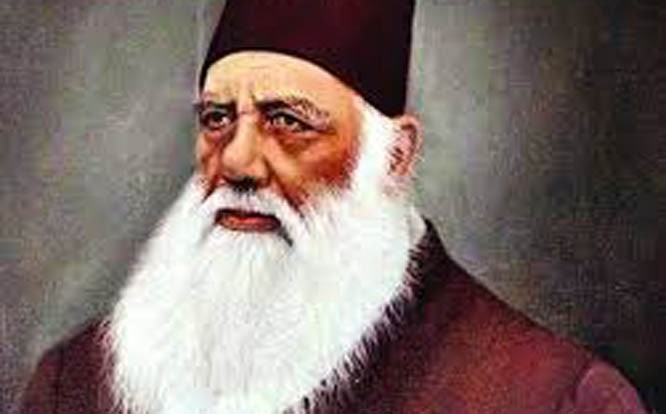

The question was pertinent and pointed. I was asked by a young academic to agree or disagree with the statement: Muslims of the subcontinent have had no social reformer who was also a prominent political leader.
South Asian Muslims have had their politicians and reformers, but it is hard to point out anybody, at least in the recent centuries, who stands out in both categories. The assertion has a ring of truth to it. For one thing, the categories are modernist in characterisation. While ideas of politics and social reform existed in pre-modern times, they were understood differently.
The young enthusiast, who had so engaged me, did not want to restrict his question to a specific era. He also said that among the Hindus, there were Raja Ram Mohan Roy, Dayanand Saraswati, Aurobindo Ghosh, Hedgewar, Savarkar and most importantly, Mohandas Karamchand Gandhi. The conclusion he drew was that social reform had helped Hindus evolve a better political system in India.
That, of course, was far too substantial a claim for me to endorse easily. An irksome aspect of the poser was its temporal scope. While he wished to draw conclusions for all epochs, all his specific references were to modern times.
In my response, I sought at the very outset to highlight the difference between a political leader and a social reformer.
One might assert that the Muslims of the Indian subcontinent did have a few reformers like Sir Syed Ahmed Khan who made a political impact. But Sir Syed’s life was devoted to amelioration of his co-religionists’ situation. He insisted that they abstain from active formal politics. Most reformers tend to peddle the agenda of social improvement among their constituency. Social reformers in Muslim communities often enter the realm of religion and frequently stress some aspect of religious performance like the correct recitation of the Kalima or some prayer rituals. This tends to dilute their engagement with the social amelioration they target. Power politics is sometimes an outcome of their endeavours but never the fundamental intent or aspiration. The political leader’s foremost engagement is with power. He expects social issues to be addressed, and eventually resolved, through political means.
The difference in emphasis affects their choice of strategies to attain the ultimate objective. One must be mindful of the fact that the objectives of the politicians, including medieval rulers; and the reformers, including Sufis and Sadhus, are not mutually exclusive.
The reformers face the uphill task of dealing with diversity, which has both positive and negative implications. Socio-cultural diversity is often a great resource for civilisational advancement. In India, particularly northern India, however, it took the dreadful form of caste system that hampered social development by obstructing occupational mobility, a key to evolution of an egalitarian society. Along with a deep-seated communalism, caste-ism was the biggest anathema the Indian reformers had to deal with. From various leaders of the Bhagti movement to adherents of many Muslim Sufi orders they all tried, mostly in vain, to bring about social camaraderie. The success of most Sufi adepts was limited to small scale conversion (despite the large number of devotees they attracted) mostly in peripheral areas where the shackles of caste were not too firmly in place. One must hasten to add that irrespective of the limited success, their objectives were laudable.
Politicians, including kings, operated differently. Their way of dealing with diversity was to create hierarchical structures. By drawing select representatives from various groups into their courts and councils, the rulers (medieval as well as modern) establish and sustain their suzerainty over a vast majority of the populace. Even a ruler like Akbar was fully engaged with only the Rajputs. One does not know how serious he was in prohibiting Sati.
The fact that the Muslim community produced no reformer-political leader in the modern period resulted in a political trajectory quite different from that of the Hindus. The founding fathers of Pakistan had a clear vision of politics but not much to say about social evolution of their constituency beyond some vague pronouncements. A significant feature of Muslim politics in northern India, and to a lesser degree in the rest of the Indian subcontinent, was the noticeable divergence between the politics and social amelioration. The establishment of the Anjuman-i-Himayat-i-Islam, for instance, aimed at social uplift. It drew inspiration from Sir Syed Ahmad Khan who disdained politics. The Tablighi Jamaat was also a social movement with no political overtones. Once the Jamaat-i-Islami made politics a priority, it failed to evolve as a political party as well as a social movement.
It probably escaped major Muslim political leaders that all reform -- whether political, cultural or economic -- had to have a social character. An intractable issue in the Muslim political idiom is that the concept of ‘social’ remains steeped in religious ideology. This has reduced it to an ahistorical formulation. Hearing the early stirrings of a social movement thus causes the state apparatus and the religious right to panic. The basic reason for such a reaction is a lack of historical antecedent. No wonder, our politics remain hollow and without substance.